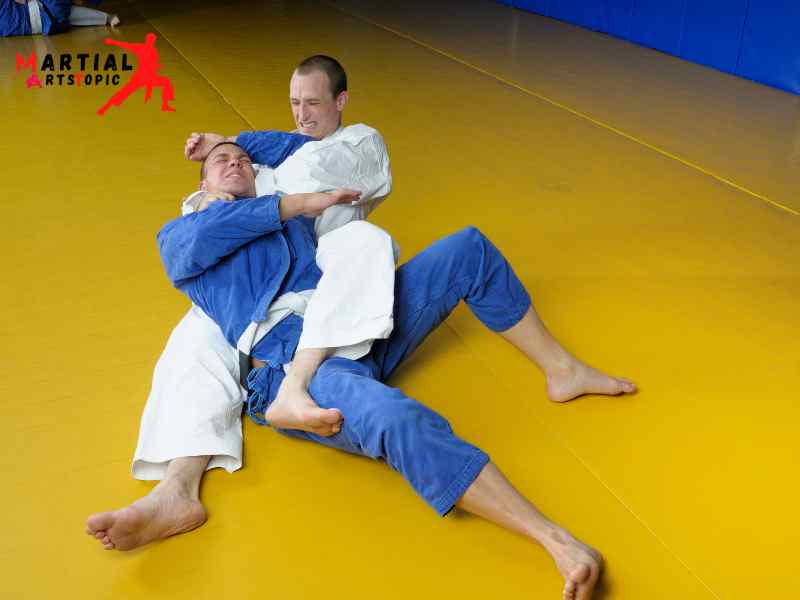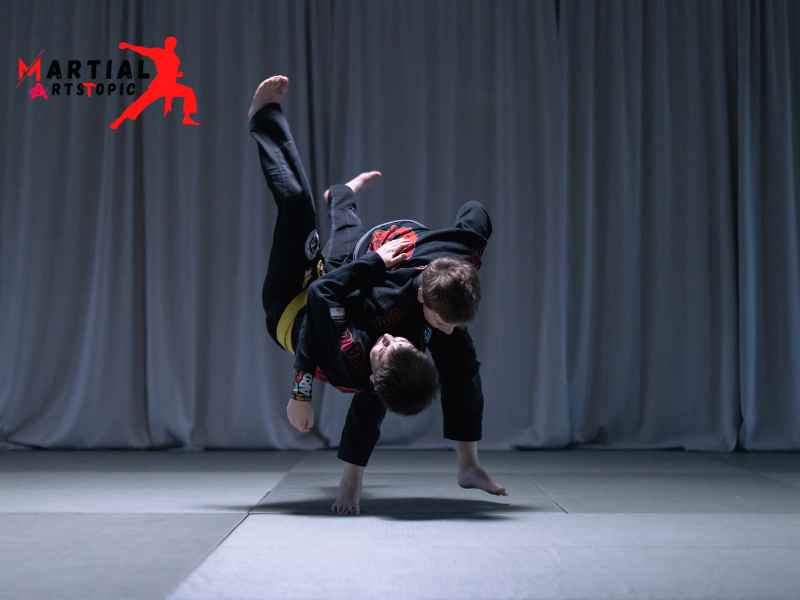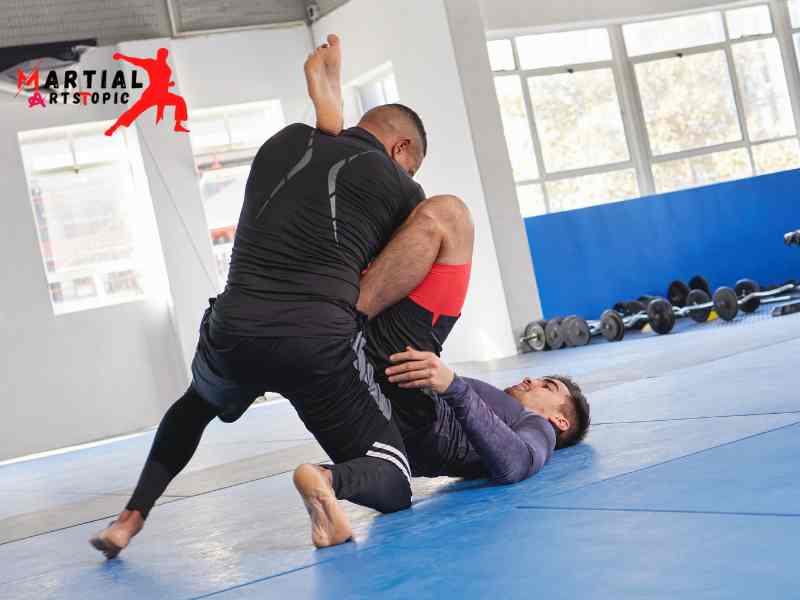
The History and Origins of Japanese Jujutsu
Martial Art Japanese Jujutsu, also known as Jujitsu or Jiu-Jitsu, is a traditional Japanese martial art that has its roots deeply embedded in the country’s rich history. With a history spanning over centuries, Japanese Jujutsu has developed and transformed, leaving a lasting impact on the martial arts world. The origins and development of this ancient martial art.
Origins of Japanese Jujutsu
Japanese Jujutsu traces its origins back to the samurai warriors of feudal Japan. During the Heian period (794-1185), the samurai needed effective close combat techniques for real-life combat situations. Thus, they developed Jujutsu as a comprehensive system of unarmed combat.
The Evolution of Japanese Jujutsu
Over time, Jujutsu developed and adapted to the changing needs of Japanese society. During the Edo period (1603-1868), Japan enjoyed a period of relative peace, and Jujutsu transformed from a battlefield art to self-defense and personal development.
Rise to Popularity
During the Meiji period (1868-1912), Japan underwent rapid modernization, and the popularity of Jujutsu declined. However, it experienced a resurgence in the early 20th century when Jigoro Kano developed Judo, a more sport-oriented version of Jujutsu. Kano’s efforts to introduce Judo to the world led to the spread of Japanese martial arts globally.
Japanese Jujutsu Today
In the present day, Japanese Jujutsu continues to thrive as a martial art and self-defense system. It has gained recognition worldwide for its practicality, effectiveness, and emphasis on discipline and personal development. Many practitioners appreciate the holistic approach of Jujutsu, which combines physical training with mental growth.
The Influence of Japanese Jujutsu
Japanese Jujutsu has had a profound influence on various martial arts styles around the world. It played a significant role in the development of Brazilian Jiu-Jitsu, a martial art known for its ground-fighting techniques. Brazilian Jiu-Jitsu revolutionized the world of mixed martial arts (MMA) and has become an integral part of many MMA fighters’ training.
Different Styles of Japanese Jujutsu: A Guide for Beginners
Different Styles of Japanese Jujutsu: If you are a martial arts enthusiast looking to delve into the world of Japanese Jujutsu, you have come to the right place. Japanese Jujutsu is a traditional form of martial arts that focuses on self-defense techniques and effective combat strategies. In this guide, we will explore the various styles of Japanese Jujutsu, giving beginners an overview of what to expect and which style might suit them best.
Daito-ryu Aiki-jujutsu
Daito-ryu Aiki-jujutsu is one of the oldest styles of Japanese Jujutsu. Developed by the Takeda clan, it emphasizes joint locks and throws to subdue opponents. The core principle of this style is aiki, the ability to blend with an opponent’s energy and redirect it. Daito-ryu Aiki-jujutsu focuses on precise movements and timing, making it a formidable self-defense system.
Kodokan Judo
Kodokan Judo, founded by Jigoro Kano, is a modern martial art derived from traditional Jujutsu styles. It emphasizes throws, grappling, and ground fighting techniques. Kodokan Judo places great importance on the concept of maximum efficiency with minimal effort, using an opponent’s strength against them. It is widely practiced as a competitive sport and is included in the Olympic Games.
Brazilian Jiu-Jitsu (BJJ)
Developed from Kodokan Judo, Brazilian Jiu-Jitsu focuses primarily on ground fighting techniques and submissions. BJJ practitioners aim to control and submit opponents through joint locks and chokeholds. Known for its effectiveness in real-life self-defense situations, BJJ has gained immense popularity worldwide, especially in the realm of mixed martial arts (MMA).
Hakko-ryu Jujutsu
Hakko-ryu Jujutsu is a modern style that combines elements of traditional Jujutsu with pressure point strikes. It emphasizes the use of vital points and small joint manipulation to neutralize opponents. Hakko-ryu Jujutsu techniques are designed to be efficient and effective, making it suitable for individuals of all ages and physical abilities.
Shorinji Kempo
Shorinji Kempo is a unique style that combines Jujutsu techniques with Zen Buddhism philosophy. It emphasizes both physical and mental development, aiming to cultivate self-discipline and self-awareness. Shorinji Kempo techniques involve strikes, joint locks, and throws, providing practitioners with a well-rounded skill set for self-defense.
Aikido
Aikido, founded by Morihei Ueshiba, is a harmonious martial art that focuses on redirecting an opponent’s energy rather than meeting force with force. Aikido techniques consist of circular movements, throws, and joint locks. Through practicing Aikido, individuals learn to blend with an attacker’s energy, neutralizing their aggression without causing harm.
Kukishin-ryu Jujutsu

Kukishin-ryu Jujutsu is an ancient style that incorporates striking, grappling, and weapons techniques. It places emphasis on the use of angles and timing to overcome opponents. Kukishin-ryu Jujutsu is a comprehensive martial art that encompasses a wide range of techniques, making it suitable for practitioners seeking a well-rounded self-defense system.
As a beginner, it’s important to find a Japanese Jujutsu style that suits your interests and goals. Whether you’re drawn to the joint locks and throws of Daito-Ryu Aiki-Jujutsu or the ground fighting techniques of Brazilian Jiu-Jitsu, there is a style out there for you. Remember to find a qualified instructor and practice regularly to reap the full benefits of this ancient martial art.
Training Methods and Practices in Japanese Jujutsu
Jiu-Jitsu, is a martial art that originated in feudal Japan. It is a comprehensive self-defense system that focuses on using an opponent’s energy against them, making it an effective martial art. In this blog post, we will delve into the training methods and practices of Japanese Jujutsu, highlighting its unique aspects and benefits.
Traditional Techniques
Japanese Jujutsu encompasses a wide range of techniques, including strikes, throws, joint locks, and ground fighting. Training in these techniques is essential to develop the necessary skills and knowledge to defend oneself effectively. Practitioners spend time mastering each technique through repetitive practice, ensuring that they can execute them with precision and efficiency.
Kata Training
Kata, or pre-arranged forms, are an integral part of Japanese Jujutsu training. These forms consist of a series of movements that simulate real-life combat situations. By practicing kata, practitioners develop muscle memory, timing, and coordination. Kata training also instills discipline and focus, as it must execute each movement with intent and accuracy.
Randori (Free Practice)
Randori is a crucial training method in Japanese Jujutsu, allowing practitioners to apply their techniques in a realistic and dynamic setting. During randori, practitioners engage in controlled sparring sessions, where they can test their skills against resisting opponents. This form of training helps develop adaptability, timing, and the ability to think on one’s feet.
Weapons Training
Japanese Jujutsu incorporates training with various traditional weapons such as the tanto (knife), jo (staff), and bokken (wooden sword). By learning weapon techniques, practitioners gain a deeper understanding of distance, timing, and body mechanics. Weapons training also enhances focus, coordination, and spatial awareness.
Mental and Spiritual Development
Japanese Jujutsu places great emphasis on spiritual development. It encouraged practitioners to cultivate qualities such as discipline, respect, humility, and perseverance. Through regular practice, individuals can develop mental fortitude, enabling them to remain calm and composed in challenging situations.
Self-Defense Applications
One of the primary goals of Japanese Jujutsu is practical self-defense. The techniques and training methods are designed to enable individuals to defend themselves effectively against larger and stronger opponents. By honing their skills through constant practice, practitioners gain confidence in their abilities, empowering them to protect themselves and others if necessary.
Benefits of Training in Japanese Jujutsu
- Effective Self-Defense: Japanese Jujutsu equips practitioners with practical skills that can be applied in real-life self-defense situations.
- Full-Body Workout: Training in Japanese Jujutsu provides a comprehensive workout, improving strength, flexibility, stamina, and overall fitness.
- Mental Discipline: Regular practice in Japanese Jujutsu cultivates discipline, focus, and mental resilience.
- Stress Relief: Engaging in martial arts training, including Japanese Jujutsu, can be an excellent way to release stress and tension.
The Basics: Essential Techniques in Japanese Jujutsu
Japanese Jujutsu, also known as Jiu-Jitsu, is a traditional martial art that originated in Japan. With a rich history dating back centuries, this martial art has gained immense popularity worldwide. Whether you are a beginner or an experienced practitioner, mastering the basics of Japanese Jujutsu is essential to your journey in this dynamic martial art.
The fundamental techniques of Japanese Jujutsu and how they form the building blocks for advanced moves and strategies. So, let’s dive in and uncover the secrets of this captivating martial art.
Ukemi – The Art of Falling Safely
Before delving into the intricate techniques of Japanese Jujutsu, it is crucial to master the art of falling safely, known as Ukemi. Ukemi teaches practitioners how to absorb impact and minimize the risk of injury during training. By learning proper falling techniques, practitioners can develop confidence and agility, essential qualities for mastering Japanese Jujutsu.
Joint Locks and Manipulation
Japanese Jujutsu is renowned for its effective joint locks and manipulation techniques. These techniques focus on controlling an opponent’s joints, forcing them into a vulnerable position or submission. By applying precise leverage and pressure, practitioners can immobilize their opponents without relying on brute force. Mastering these techniques requires patience and precision, allowing practitioners to neutralize larger and stronger opponents.
Throws and Takedowns
Throws and takedowns are integral to Japanese Jujutsu, enabling practitioners to take control of an opponent by utilizing their own momentum against them.By understanding the principles of balance, timing, and body mechanics, practitioners can execute powerful throws and takedowns effortlessly. These techniques not only provide a tactical advantage, but also serve as a means to subdue opponents without causing excessive harm.
Striking and Blocking
While it primarily known Japanese Jujutsu for its grappling techniques, it also incorporates striking and blocking techniques. This well-rounded approach ensures practitioners are prepared for various scenarios. By mastering striking techniques such as punches, kicks, and knee strikes, practitioners can create opportunities to execute their grappling maneuvers effectively. Additionally, learning proper blocking techniques is crucial to defending against strikes from opponents.
Ground Fighting and Submission Holds
Ground fighting and submission holds play a significant role in Japanese Jujutsu. When a fight goes to the ground, practitioners utilize their knowledge of joint locks, chokes, and immobilization techniques to gain the upper hand. By mastering these techniques, practitioners can effectively neutralize an opponent’s strength and size advantage, turning the ground into an advantageous position.
Mastering the basics of Japanese Jujutsu is a lifelong journey that requires dedication, discipline, and continuous practice. By focusing on these essential techniques, practitioners can build a solid foundation for their progression in this captivating martial art.
The Benefits of Practicing Japanese Jujutsu for Self-Defense
Self-defense is a crucial skill that everyone should consider learning. In today’s world, where personal safety is a concern for many, it’s essential to have the knowledge and ability to protect oneself. One martial art that has gained popularity for its effectiveness in self-defense is Japanese Jujutsu.
Jujutsu is a traditional martial art that originated in Japan. It focuses on using an opponent’s energy and movements against them, making it suitable for people of all sizes and strengths. By leveraging joint locks, throws, strikes, and immobilizations, Japanese Jujutsu empowers practitioners to overcome larger and stronger opponents.
Here are some of the key benefits of practicing Japanese Jujutsu for self-defense:
- Practical and Effective Techniques: Japanese Jujutsu emphasizes practical self-defense techniques that can be applied in real-life situations. Unlike some martial arts that focus on sport or competition, Japanese Jujutsu prioritizes techniques that work in self-defense scenarios. By learning and practicing these techniques, you can gain the skills and confidence needed to protect yourself effectively.
- Increased Awareness and Focus: Training in Japanese Jujutsu requires a high level of concentration and focus. Practitioners learn to pay attention to their surroundings, anticipate potential threats, and react quickly and decisively. This heightened awareness can be applied not only in self-defense situations but also in everyday life, making you more alert and prepared for any unexpected events.
- Improved Physical Fitness: Japanese Jujutsu is a physically demanding martial art that provides a full-body workout. By practicing various techniques, practitioners develop strength, flexibility, endurance, and coordination. Regular training sessions can help improve cardiovascular health, increase muscle tone, and enhance overall physical fitness levels.
- Self-Confidence and Mental Resilience: Mastering the techniques of Japanese Jujutsu requires dedication, discipline, and perseverance. As you progress in your training, you’ll develop a sense of confidence in your abilities to defend yourself. This newfound self-assurance can extend to other areas of your life, boosting your self-esteem and mental resilience.
- Stress Relief and Mental Well-being: Engaging in physical activities like Japanese Jujutsu can help reduce stress and promote mental well-being. The focused training sessions provide an outlet for releasing tension and frustration, allowing you to achieve a state of mental relaxation. Additionally, the camaraderie and support from training partners and instructors can create a sense of community and belonging, contributing to your overall mental well-being.
Japanese Jujutsu Bell System and Progression

Japanese Jujutsu is a traditional martial art that emphasizes self-defense techniques and physical fitness. Within the art, the belt system serves as a means of tracking an individual’s progress and skill level. Understanding the Japanese Jujutsu belt system and progression is essential for practitioners as they advance through their martial arts journey.The Japanese Jujutsu belt system typically consists of colored belts that signify different ranks and levels of expertise. The progression from one belt to the next is achieved through dedicated training, discipline, and the demonstration of proficiency in various techniques and principles of the art.
- White Belt (Beginner): The journey in Japanese Jujutsu often begins with the white belt, symbolizing purity and the initial stages of learning. As a beginner, practitioners focus on fundamental movements, stances, and basic self-defense techniques.
- Yellow Belt: Advancing to the yellow belt level requires a deeper understanding of the foundational techniques, as well as improved physical conditioning and coordination. Students at this stage continue to refine their striking, grappling, and defensive maneuvers.
- Orange Belt: Progressing to the orange belt signifies an increased level of proficiency and dedication. Practitioners begin to delve into more complex techniques, including joint locks, throws, and submissions. The orange belt stage is a significant milestone in one’s journey, reflecting a commitment to mastering the art.
- Green Belt: Achieving the green belt status demonstrates a solid grasp of the core principles of Japanese Jujutsu. Students at this level focus on honing their skills through sparring, partner drills, and scenario-based training. The green belt signifies growth and continued advancement within the art.
- Blue Belt: The blue belt represents a high level of technical expertise and a deeper understanding of Japanese Jujutsu concepts. At this stage, practitioners explore advanced grappling techniques, weapon defense, and the application of strategy in self-defense scenarios.
- Purple Belt: Progressing to the purple belt level indicates a significant level of proficiency and mastery in Japanese Jujutsu. Students at this stage are adept at adapting to various combat situations, demonstrating fluidity in their movements, and understanding the principles of leverage and balance.
- Brown Belt: The brown belt signifies an advanced level of skill and knowledge in Japanese Jujutsu. Practitioners at this stage focus on perfecting their techniques, refining their timing and precision, and mentoring lower-ranked students. The brown belt stage prepares individuals for the coveted black belt status.
- Black Belt: Earning the black belt is a significant achievement and symbolizes the attainment of a high level of expertise in Japanese Jujutsu. Black belt practitioners embody the principles of discipline, respect, and continual self-improvement. It is important to note that achieving the black belt is not the end of the journey, but the beginning of a new chapter in one’s martial arts development.
Beyond the black belt, there are various degrees of mastery, each requiring ongoing dedication, learning, and refinement of skills. The Japanese Jujutsu belt system serves as a roadmap for personal growth and development, guiding practitioners through their martial arts journey while instilling a sense of discipline, respect, and perseverance.
Conclusion
Japanese Jujutsu is a martial art deeply rooted in tradition and philosophy. With its focus on self-defense and strategic techniques, it offers practitioners a holistic approach to physical and mental development. The principles of balance, leverage, and timing form the foundation of Jujutsu, making it an effective martial art for individuals of all ages and abilities.Throughout history, Japanese Jujutsu has evolved and adapted to meet the changing needs of its practitioners. From its origins as a method of combat for samurai warriors to its modern-day practice as a martial art and self-defense system, Jujutsu continues to captivate and inspire martial artists worldwide.
The benefits of practicing Japanese Jujutsu extend beyond physical strength and self-defense. It cultivates discipline, patience, and respect, instilling valuable life skills that transcend the dojo. Through dedicated training, individuals can enhance their overall well-being and develop a deeper understanding of themselves and their surroundings.
Japanese Jujutsu is not just a martial art; it is a way of life that empowers individuals to face challenges head-on, both on and off the mat. By embracing its principles and honing their skills, practitioners can find balance, harmony, and resilience in their daily lives.
